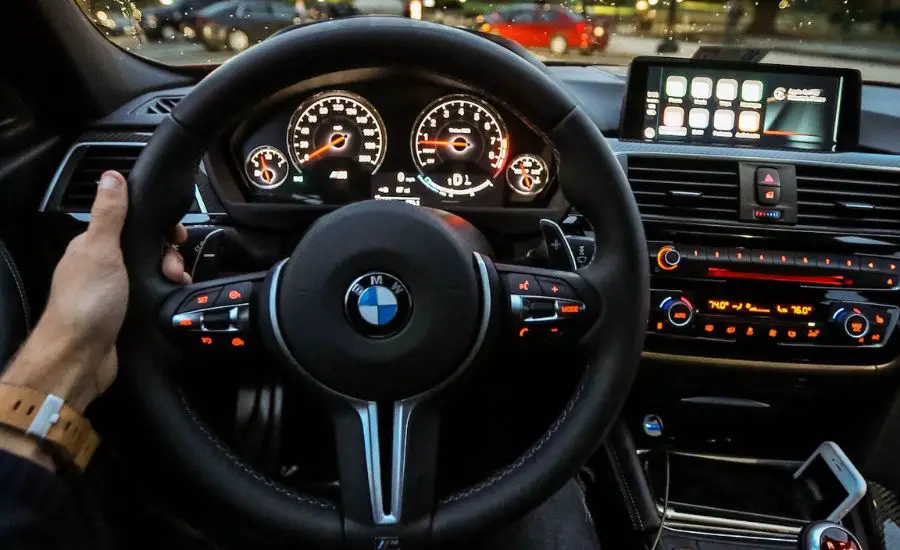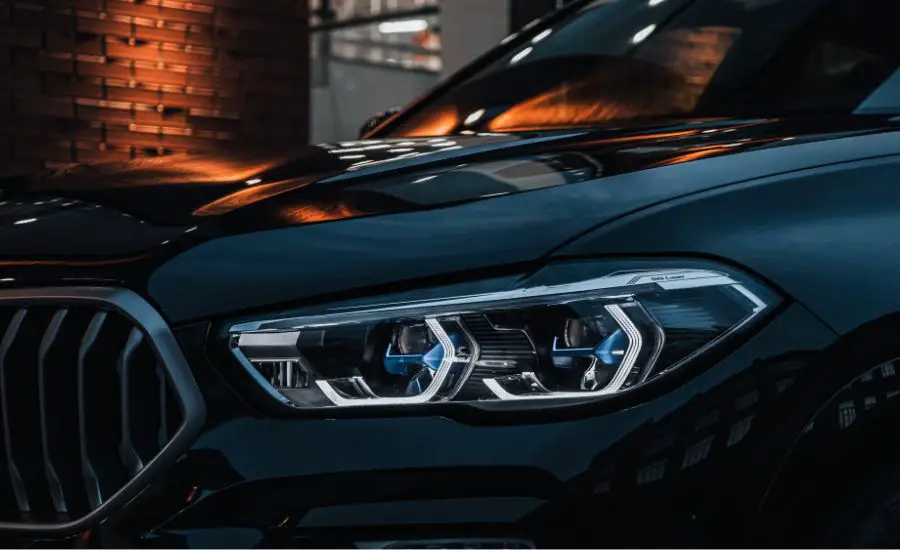Enhancing Performance: BMW N55 Tuning and Power Gains
BMW N55 Tuning? In the world of automotive enthusiasts, the pursuit of higher performance is a driving force. Among the vehicles that hold a special place in this quest is the BMW N55 engine.
This turbocharged powerhouse has captured the attention of enthusiasts and tuners alike, offering a platform ripe for unlocking hidden potential.
Through a strategic combination of tuning of ECU, performance modifications, and precision engineering, the BMW engines can be transformed into a true performance icon.

In this comprehensive guide, we delve into the intricacies of N55 tuning, exploring the various aspects of power gains, engine components, and performance upgrades that contribute to an exhilarating driving experience.
Contents
Understanding the BMW N55 engine control unit (ECU)
At the heart of the BMW N55’s potential lies its advanced ECU. The ECU serves as the brain of the engine, governing critical engine parameters such as ignition timing, fuel injection, and manifold absolute pressure.
In stock form, the N55 engine already boasts impressive electric output and efficiency.
However, for those seeking more power gains and enhanced performance, targeted modifications can make a substantial difference.
Unleashing power gains through ECU tuning
Tuning of ECU: ECU tuning is the cornerstone of N55 engine enhancement. By reprogramming the ECU, enthusiasts can optimize parameters such as fuel delivery, ignition timing, and boost pressure.
This recalibration ensures that the engine operation is within safe limits while maximizing power output.
Ignition timing and fuel injection system: tuning of ECU enables precise adjustments to ignition timing and fuel injection.
These adjustments are crucial for achieving increased cylinder pressures and more efficient combustion, ultimately leading to increased power.
Boost pressure and turbocharger efficiency: the N55’s twin-scroll turbocharger is a key component that can be optimized through tuning ECU.
Adjusting boost pressure and turbocharger efficiency results in an improved exhaust system and enhanced power delivery across the rev range.
Direct injection advantages: the N55 engine employs direct fuel injection, a technology that can be fine-tuned through ECU programming.
Optimizing direct injection patterns contributes to improved fuel atomization and more efficient combustion in the combustion chamber.

Performance modifications for optimal results
Cold air intake and proper air-fuel ratio: upgrading to a cold air intake enhances airflow to the engine, ensuring a steady supply of oxygen for combustion. Tuning of ECU must align with the increased airflow to maintain an appropriate air-fuel ratio for optimal efficiency gains.
Additionally, to ensure the engine receives cooler air, cold air intake frequently relocates the air filter outside the engine bay or behind a heat-shielded enclosure.
Exhaust system upgrades: a cat-back exhaust system and stock downpipe replacement can significantly improve exhaust flow. This reduction in backpressure enhances turbocharged engines’ efficiency and power output, especially when coupled with the tuning of the ECU.
Intercooling for engine health: the stock intercooler can sometimes struggle to handle the heat generated by increased power levels. Upgrading to an aftermarket intercooler improves cooling efficiency, maintaining the consistent health of the engine under higher cylinder pressures.

Other supporting modifications for maximum performance
Spark plugs and ignition coils: elevating the N55’s power output necessitates upgrading spark plugs and ignition coils.
These components ensure consistent and efficient combustion under increased cylinder pressures.
Upgraded plugs and ignition coils enable the engine to harness the enhanced combustion dynamics orchestrated through the tuning of ECU, resulting in a harmonious synthesis of power delivery and reliability.
Moreover, the integration of steering wheel controls allows drivers to engage with these enhancements effortlessly, providing a seamless bridge between their intent and the N55’s elevated performance.
Fuel quality and injection system: tuning for more power demands more fuel. High-quality fuel and, in some cases, upgraded fuel injectors and fuel pump properties are necessary to meet the engine’s demands for increased fuel delivery.
Engine oil and cooling: as electric output increases, the engine generates more heat. Using high-quality oil and improving cooling systems become critical to maintaining the health of the engine and longevity.
Cost-effective methods and future prospects
Flash tuning vs. aftermarket ECUs: flash tuning the factory ECU is a cost-effective method for achieving performance gains. However, some enthusiasts opt for aftermarket ECUs to gain greater control over engine parameters and unlock advanced features.
Alternative fuels and performance: exploring different fuels can offer unique opportunities for power gains.
Some N55 owners experiment with E85 or other race fuels to take advantage of higher octane levels and cooler combustion temperatures.
Continued advancements: BMW engineers designed the N55 engine with performance and durability in mind. As the aftermarket community continues to innovate, the potential for even more impressive performance upgrades remains enticing.

FAQ
Here are some of the most common questions related to the topic of N55 tuning.
Is the N55 good for tuning?
Absolutely, the BMW N55 engine is a solid foundation for tuning endeavors.
Its design, technology, and engineering make it a suitable platform for extracting additional power and performance without compromising its inherent reliability.
The N55 engine, introduced in 2009 as an evolutionary successor to the N54, brings with it notable improvements in terms of power delivery, efficiency, and reduced turbo lag. This evolution has resulted in an engine that serves as a strong foundation for tuning without compromising its essential reliability.
One of the key reasons the N55 is favorable for tuning is its direct fuel injection system.
This technology allows for precise control over the fuel pump delivery, enhancing combustion efficiency and power output.
Additionally, the N55 engine comes equipped with a twin-scroll turbo, which improves throttle response and contributes to a broader powerband.
The ECU is the central brain of the N55, and it’s a crucial component in the tuning process. Tuning ECU involves reprogramming the software to optimize various parameters such as fuel delivery, ignition timing, and boost pressure.
The N55’s ECU can be recalibrated to accommodate performance modifications and unlock the engine’s hidden potential.
Whether you’re pursuing mild performance gains or aiming for more substantial power upgrades, the N55’s ECU can be fine-tuned to align with your goals.
It’s worth noting that while the N55 is well-suited for tuning, proper execution is essential.
Collaborating with experienced tuners or using reputable tuning solutions is crucial to ensure that the modifications are balanced and harmonize with the engine’s overall integrity.
Tuning beyond the engine’s capabilities or neglecting additional modifications could lead to reliability issues.
How much HP can N55 handle?
The power potential of the BMW N55 engine is impressive, and with the correct modifications, it can achieve substantial horsepower gains.
In stock components form, the N55 already offers a solid power output, ranging from around 300 to 335 horsepower, depending on the model and year.
However, with the right combination of upgrades, the N55 can breach the 400 horsepower mark and beyond.
Through strategic tuning of ECU, optimizing the twin-scroll turbochargers, and enhancing the engine’s breathing capabilities, the N55 can be pushed to deliver at least 400 horsepower.
The specifics of the horsepower gain depend on the modifications chosen, the quality of the tuning, and the overall health of the engine.
It’s important to approach higher horsepower goals with careful consideration of supporting modifications. This includes reinforcing internal components, such as connecting rods and pistons, and ensuring that supporting systems like cooling, fueling, and exhaust are capable of handling the increased demands.
The synergy between these components and the engine’s tuning ensures that the increased horsepower is harnessed effectively without compromising the engine’s longevity and reliability.
How much power can N55 handle reliably?
The reliable power threshold of the N55 engine is typically in the range of 400 to 500 horsepower, depending on the specific modifications and the level of stress the engine is subjected to.
While it’s possible to push the N55 beyond 500 horsepower, it often requires extensive modifications and meticulous attention to detail to maintain reliability.
The engine’s internals, such as the connecting rods, pistons, and crankshaft, have their limits.
Pushing the engine to extremely high power levels without addressing these components can lead to catastrophic failures.
For power gains beyond the 500 horsepower range, it’s recommended to consider reinforcing the internal components of the engine, which might involve using forged internals that can handle the increased stresses.
Reliability also hinges on factors such as the quality of parts, the expertise of the tuners, and the diligence in maintenance.
Regular maintenance, using high-quality fluids, and monitoring critical engine settings can contribute to the long-term reliability of a heavily modified N55 engine.
In essence, while the N55 can be coaxed to deliver impressive power gains, it’s important to strike a balance between performance aspirations and the engine’s inherent reliability.
Collaborating with knowledgeable tuners and making informed decisions about supporting modifications are pivotal steps in achieving substantial power gains without sacrificing the N55’s dependability.
Conclusion
The BMW N55 engine presents a canvas of potential for those seeking to elevate their driving experience.
Through precise ECU tuning, performance modifications, and strategic upgrades, the N55’s power gains and performance capabilities can be harnessed to create a driving experience that’s both exhilarating and reliable.
As technology evolves and the realm of automotive performance pushes boundaries, the legacy of the BMW engine will continue to inspire enthusiasts to explore the uncharted territories of power and performance.